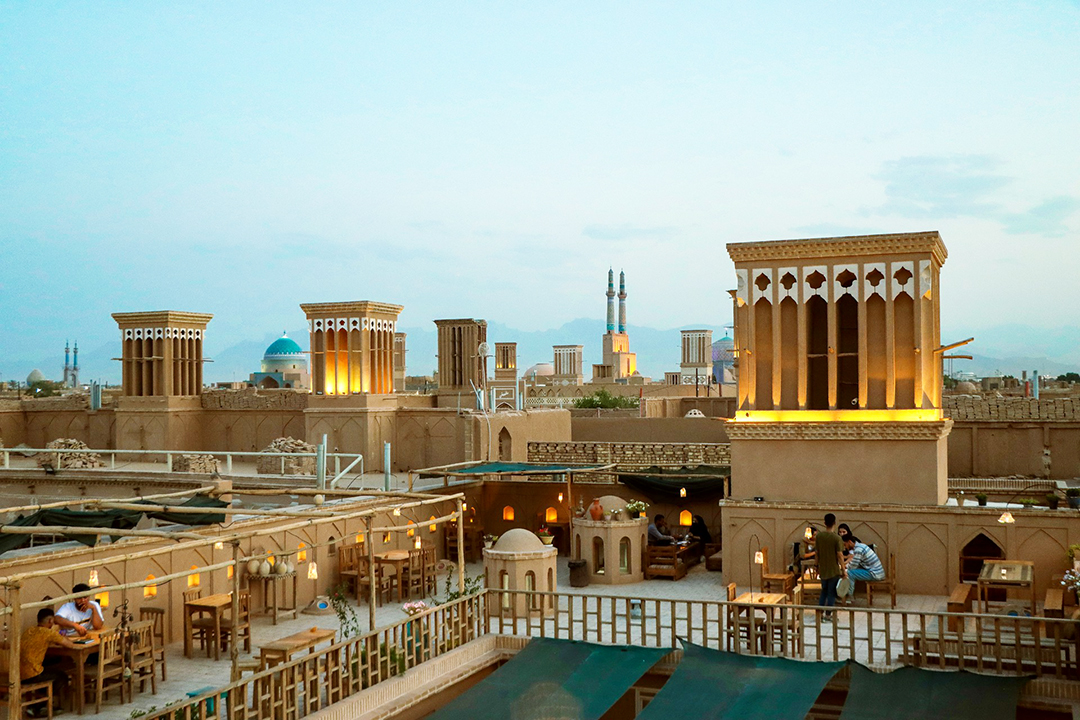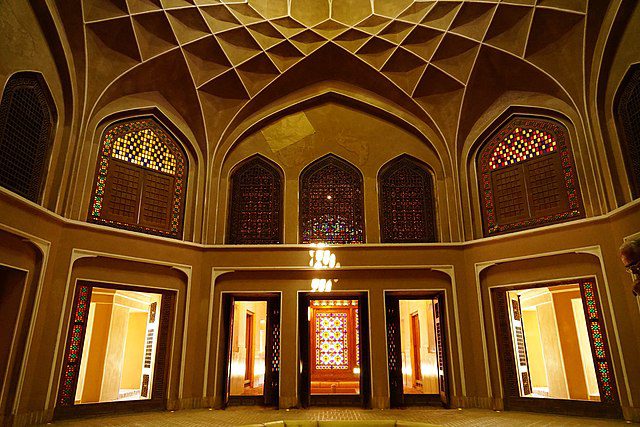Table of Contents
Yazd, a UNESCO World Heritage site, beckons with its unique earthen buildings and iconic wind towers. Dive into its rich history as you wander through traditional neighborhoods and visit ancient Zoroastrian fire temples.
Don’t miss the chance to marvel at the city’s famous wind catchers and ancient water channels, each a testament to Yazd attractions and its enduring legacy. With history around every corner, the city invites you to explore its timeless beauty through these top things to do in Yazd.
Amir Chakhmaq Complex
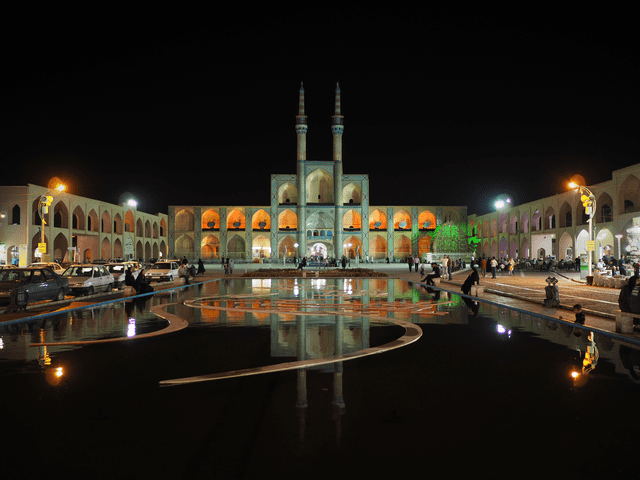
Among Yazd attractions stands the impressive Amir Chakhmaq complex, a symbol of the city’s history and culture. As one of Yazd top tourist attractions, this grand three-story building, located in its square, boasts a stunning facade with beautifully crafted iwans. As the sun sets, the facade lights up with vibrant colors, creating a magical atmosphere for visitors.
Built in the 15th century and renovated over time, the complex remains a cherished landmark, attracting locals and tourists alike. Surrounding the square, you’ll find charming sweet and ice cream shops, adding a delightful touch to your visit to Yazd.
Bagh e Dolat Abad (Dowlat Abad Garden)
In the middle of Yazd’s desert, a stunning Persian garden is honored by UNESCO. It’s filled with pomegranate and orange trees, following the traditional Persian garden design. At its heart stands a historic building, once home to Persian Regent Karim Khan Zand. Built in the 18th century, this special place showcases beautiful stained glass windows from that era. And don’t miss the towering 33-meter tall Bâdgir, a unique wind-catching tower.
The coolest part? You can walk underneath it and see how it works. Take your time to explore this peaceful garden and appreciate the rich Yazd sightseeing.
Saheb Al-Zaman Zurkhaneh
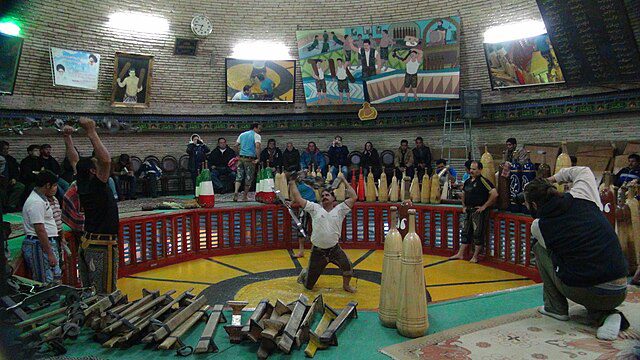
In the heart of Yazd lies the incredible Saheb Al-Zaman Zurkhaneh, a place where history and sports come together. This 500-year-old spot, known as the “house of strength,” has a fascinating past. Originally, it was a cistern called an Ab Anbar, with five big wind towers. But now, it’s a place where you can see exciting traditional sports events.
When you visit Saheb Al-Zaman Zurkhaneh, one of the top Yazd tourist attractions, you’re in for a treat. You’ll witness impressive displays of strength and tradition that’ll leave you in awe. It’s like stepping into a time machine where the old ways mix with the new. As you soak in the atmosphere and watch the athletes in action, you’ll feel the spirit of resilience and history all around you.
Fire Temple of Yazd
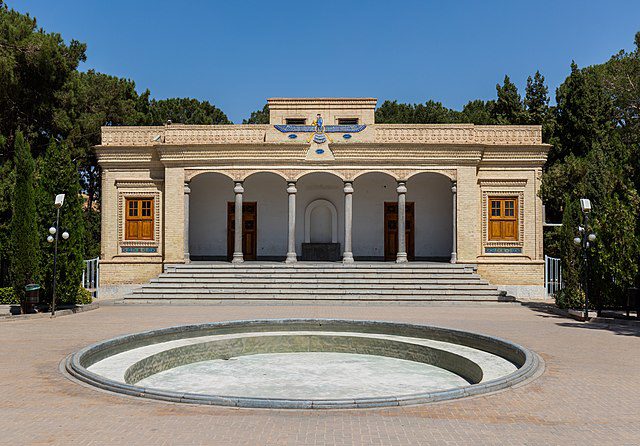
When you wander through Yazd, you’ll stumble upon the fascinating Fire Temple. It’s more than just a pretty sight with its mudbrick buildings and tall wind towers. This place holds a special place in the hearts of Zoroastrians, who’ve left behind a rich heritage here. If you’re curious about Zoroastrianism, the ancient religion that once thrived in this region, and the significance of fire in their beliefs, then a visit to this temple is a must.
As you step inside the Fire Temple, one of the best things to do in Yazd, you’re stepping into a journey through history and faith. Here, surrounded by a peaceful atmosphere, you’ll learn all about Zoroastrianism—a religion that deeply respects fire as a symbol of purity and spirituality. You’ll uncover the importance of fire temples in their ancient customs and beliefs, gaining a deeper appreciation for their cultural significance. It’s not just a sightseeing stop; it’s a memorable adventure that leaves a lasting impression on anyone who visits.
Towers of Silence
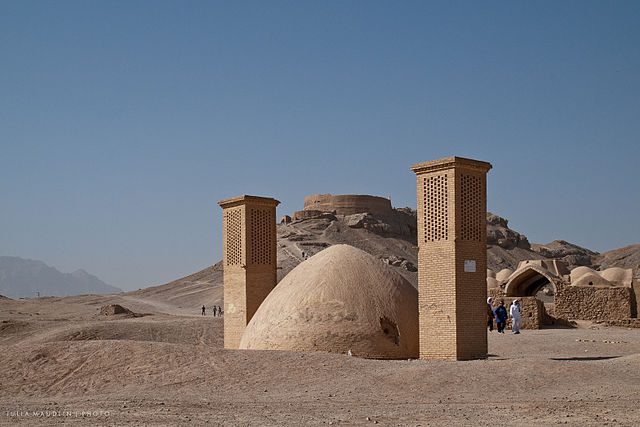
Out in the desert, there’s a fascinating spot called the Towers of Silence as one of Yazd top tourist attractions. These strange towers sit on hills nearby, looking like big circles against the sky. A long time ago, according to Zoroastrian beliefs, people left their dead in these towers for birds to eat. It’s a bit spooky, especially with old Zoroastrian buildings around adding to the mysterious feeling.
Standing there, surrounded by the quiet desert, you can’t help but feel like you’re in another world—one where old traditions and mysteries come together. The towers hold stories of the past, making you wonder about the people who lived and worshipped here long ago. It’s a place that makes you think and feel, as if the spirits of the past are still whispering their secrets to anyone who will listen. The Towers of Silence aren’t just old buildings; they’re reminders of a time gone by, keeping alive the ancient wisdom of the Zoroastrian faith.
Yazd Jame Mosque
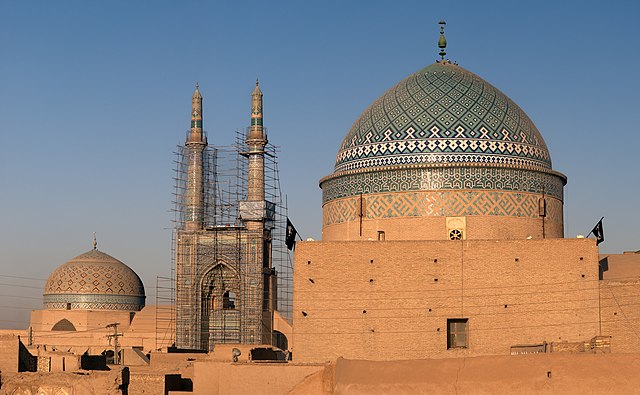
Located in the desert, Yazd Jame Mosque is a stunning example of Iranian architecture. Standing tall for a hundred years, it’s a favorite spot for tourists from Iran and beyond. Built across three different times, it’s a reminder of Iran’s rich past, especially during the Sassanid era. What makes it special are its unique features: a beautiful dome, a tall entrance, and intricate tilework that’s truly breathtaking.
For years, Yazd Jame Mosque, one of the toppest Yazd attractions, has been a symbol of Iran’s heritage. It was officially recognized in 1935 and has since been a must-visit for travelers. Beyond its historical significance, it’s a place that leaves visitors amazed by its beauty. Stepping inside feels like stepping back in time, experiencing the wonder of Iranian craftsmanship firsthand.
Lariha House Museum
Yazd is full of amazing sights, and one of its hidden treasures is Lariha House Museum. It’s been around for about 150 years, ever since the Lariha family moved here from Fars Province about 270 years ago. This place is special because it has a room filled with old mirrors, each about fifty to sixty years old, showing off its fancy history.
Since 1997, Lariha House Museum has been officially recognized as part of Iran’s important cultural heritage. It’s like stepping back in time, where every corner has a story to tell about Yazd’s past.
Alexander Prison
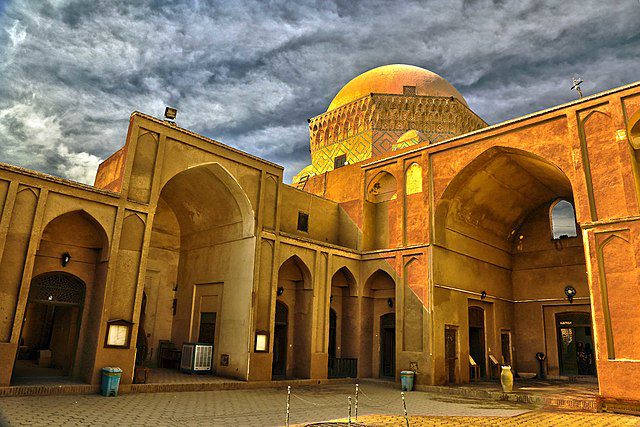
In the heart of the old town, Alexander Prison catches the eye of many tourists and locals. Some say it was built by Alexander the Great, but there’s not much inside to see.
Instead, the courtyard in front of the prison is a pleasant spot to sit and admire the building. It’s right in the middle of town, so you’ll probably walk by anyway. While the inside might not impress, the courtyard offers a peaceful place to relax and soak in the history of this mysterious place.
Khan Bazaar
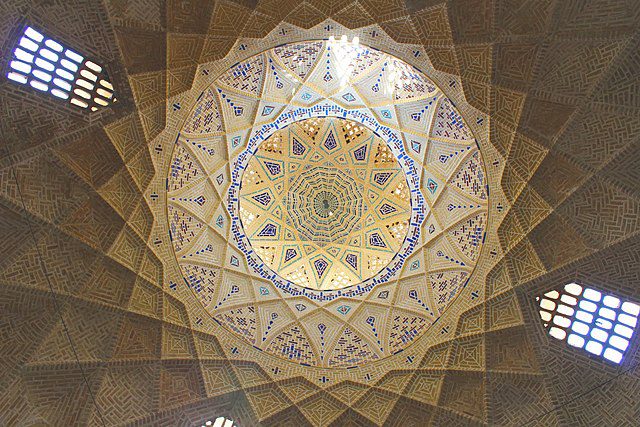
Venturing into Khan Bazaar in Yazd feels like stepping back in time. This ancient marketplace has been around since the 9th century, offering a glimpse into the city’s rich history. One of its highlights is termeh, traditional handwoven silk and wool fabrics. While many items may look like silk, they’re actually machine-made. But they still make wonderful souvenirs for decorating your home.
More than just a historic site, Khan Bazaar is a testament to Yazd’s skilled artisans, who have passed down their craft through the ages. As you wander through the maze-like alleys, you’ll experience the sights, sounds, and smells of a bustling market. Each encounter with a local vendor offers a chance to learn about Yazd’s heritage and become part of its living history. Khan Bazaar isn’t just a place to shop – it’s an immersive journey through time.
Ab Anbars
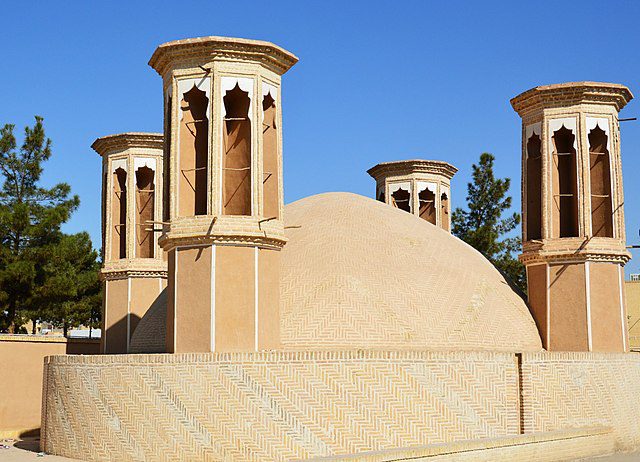
Walking around Yazd, you can spot some interesting buildings called ab anbars or water reservoirs. These dome-shaped structures store water underground and use wind towers to keep it cool. While some are still in use, many we saw were abandoned and used as garbage dumps instead.
Near Amir Chakmakh Square, there’s a Water Museum where you can learn more about how people in this desert city have used water over the years. It’s a great place to discover the clever ways they managed to store and use water, even in such a dry environment.
FAQs about Things to Do in Yazd
Q1: What is Yazd famous for?
A1: Yazd has cool stuff for visitors, like wind catchers, a Zoroastrian fire temple, Termeh (fancy fabric), making silk, tasty baqlava and qotab (local treats), and more. Visiting Yazd shows you what life is like in desert towns and how people deal with it.
Q2: Why travel to Yazd?
A2: Yazd is really cool because of its water tanks, narrow streets, mills, and old buildings. It’s famous for its unique architecture and history, showing how people built amazing stuff in hot, dry places like this.
Q3: How old is Yazd Iran?
A3: Yazd is a city and the capital of Yazd province in central Iran. It was founded in the 5th century AD and Marco Polo called it the “noble city of Yazd”. The city is located on a mostly empty sandy plain, around 4,000 feet (1,200 meters) above sea level.
Q4: What is the religion in Yazd Iran?
A4: Most folks in Yazd are Shia Muslims. It’s a city that’s very religious, traditional, and conservative.
Q5: What is the history of Yazd Iran?
A5: Yazd started to become important in the late ancient times, around the early 5th century, when Yazdegerd I, a Sassanid King, was ruling. Trade was super important for Iran’s economy back then, and Yazd became a busy place for merchants traveling between Asia and India.
Last Words: Discover the Best Things to Do in Yazd with a Customized Tour
Yazd, a UNESCO World Heritage site, has unique mud buildings and tall wind towers. Explore its history by walking through old neighborhoods and visiting ancient Zoroastrian temples. Don’t forget to see the famous windcatchers and old water channels. Yazd has lots of history to explore in its top 10 must-see attractions.
When you’re heading to Yazd, Iran, get ready for an amazing trip full of cool stuff like old buildings and tasty food. But to make the most of it, it’s a good idea to go on a tour that’s made just for you. That’s where To Iran Tour comes in. We’re all about creating trips that fit exactly what you like. Whether you’re into seeing cool buildings, shopping in bustling markets, or checking out the desert scenery, we’ll make sure your trip is exactly how you want it.
With To Iran Tour, your Iran adventure is about to get a whole lot more awesome.

